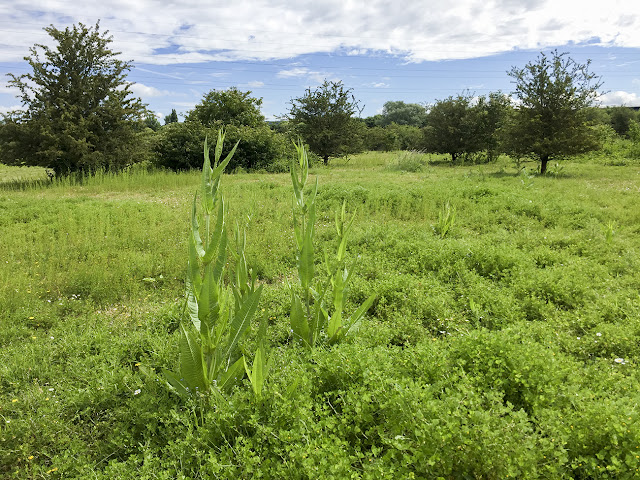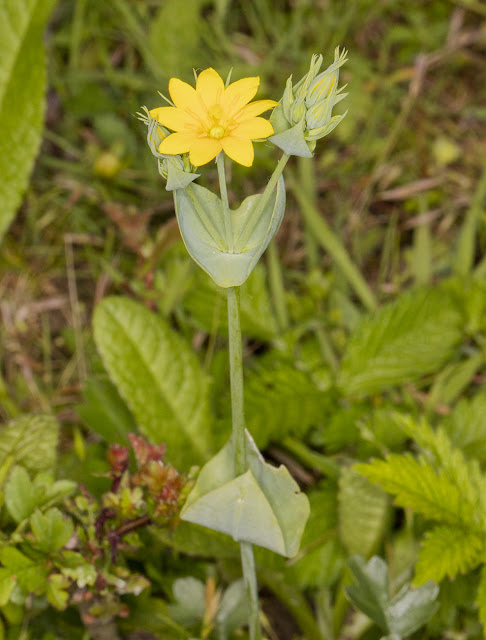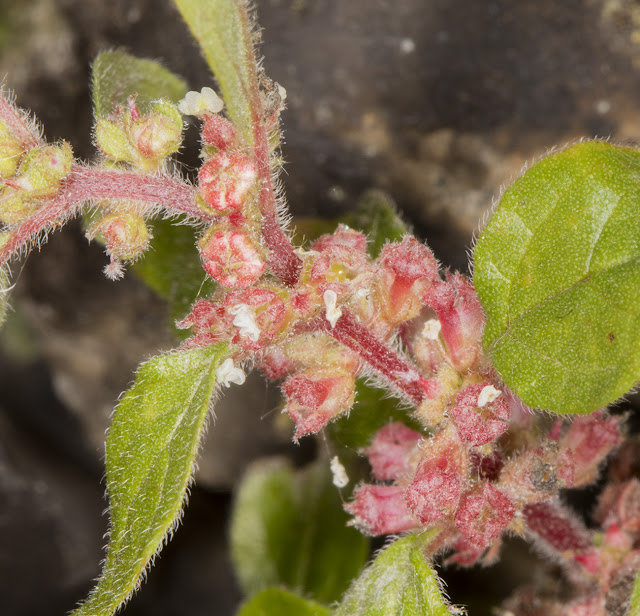 |
| Myxomycete, Ceratiomyxa fruticulosa. High Elms Country Park, 19 June 2016. |
If you think about plants that are not green, have no green leaves and do not need sunlight to make their food, you might think of fungi and perhaps slime moulds (Myxomycetes). Actually, though, neither of these can really be called plants.
Myxomycetes eat all sorts of tiny things, including bacteria and fungus spores, and most of them slurp around as a sort of mobile jelly until they settle down and put up spore-bearing organs like those shown here. You can see the jelly form in this photo too.
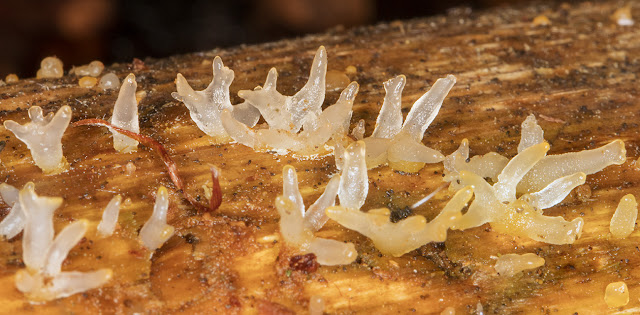 |
| Pale Stagshorn, Calocera pallidospathulata. High Elms Country Park, 23 May 2016. |
This one is a fungus. Athough it looks rather like the Myxomycete and lives in the same sort of place, on rotting wood, it is not any sort of close relation, just as, for example, dragonflies and swifts are not closely related even though they both fly around snapping up insects.
But there are also quite a few true plants that do not have any chlorophyll. They are parasitic, leeching off the root systems of plants that do get their energy from the sun.
 |
| Common Toothwort, Lathraea squamaria. High Elms Country Park, 24 March 2016. |
Here is one, the Common Toothwort, that comes up early in the year in old woodland. It is usually associated with Hazel.
 |
| Common Broomrape, Orobanche minor. High Elms Country Park, 19 June 2016. |
There are also a whole group of Broomrapes that parasitise various plants. They are not very common, and this is the only one I have seen locally. I think it's the Common Broomrape, which parasitises a range of plants. It was certainly in amongst a mixed group.
 |
| Yellow Bird's Nest, Monotropa hypopitys. High Elms Country Park, 20 July 2016. |
This is another parasite, but at one remove. It feeds off fungi which in turn are linked to tree roots. The fungi provide minerals and basic food substances to the trees, and the trees provide sugars to the fungi. Then the Yellow Bird's-nest grabs its food from the fungi. SOmetimes you can trace a tree's roots by looking at the growth patterns of this plant.
I used to wonder how it got its common name, but this year I saw a mature flower:
 |
| Yellow Bird's Nest, Monotropa hypopitys. Closeup of flower. High Elms Country Park, 8 July 2016. |
And it became less of a mystery.
All these so far have been seen at High Elms Country Park this year. This last example, below, was photographed in the same park a couple of years ago.
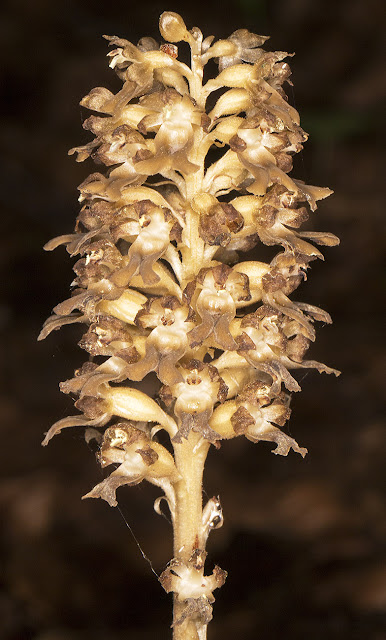 |
| Bird's Nest Orchid, Neottia nidus-avis. High Elms Country Park, 29 June 2013. |
Not to be confused with the Yellow Bird's-nest, though it often grows near it - as it does here - this is the Bird's Nest Orchid. It is also associated with tree roots; Beech, in this case.
As you can see, most of these plants are yellowish and sickly-looking. But they are actually bursting with health, which makes one woonder about the state of their victims!




















